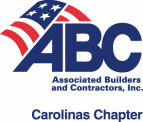You’re the authorized agent of a North Carolina county that has entered into an $8 million contract with a general contractor for the construction of a new administrative building. The performance bond issued on behalf of the GC is in the statutory form, and therefore applies not only to base scope, but also to “any and all duly authorized modifications of said contract…notice of which modifications to the Surety being hereby waived[.]” N.C. Gen. Stat. § 44A-33(a). The penal sum of the bond corresponds to the contract’s original value — i.e., $8 million.
As the GC begins mobilization, you’re informed that the county has obtained the funding necessary to build an additional wing to the building. That work had been an alternate in the bidding process, but was rejected by the county when the bids came in higher than the architect’s estimate, leading the county to award a contract to the GC for base bid work only. Now that the additional funding has been appropriated to the project, the $500,000 additional wing can be added to the GC’s scope of work by change order.
You discuss the scope change with the GC, who’s excited about the additional work. A change order is executed, and requires the GC to provide notice of the change to the surety. You’re told such notice has been given. The County now has $8.5 million in protection under the performance bond, right?
Not so fast, Sparky.
It might be tempting to make that assumption, particularly in light of the language of the bond waiving notice of change orders. But a 1992 case out of the U.S. Bankruptcy Court for the Eastern District of Tennessee, one of the leading authorities on the question, has held that the penal sum of a bond is not automatically increased when the contract sum is increased, despite the presence of language in the bond waiving notice of contract modifications. The case, In re Technology for Energy Corp., 140 B.R. 214 (E.D. Tenn. 1992), relied on the “Statute of Frauds,” which requires certain contracts to be in writing. Most jurisdictions apply the Statute of Frauds to those species of contracts that bar examinees memorize through the mnemonic device “MY LEGS” — Marriage contracts (think prenups), contracts calling for performance greater than one Year, Land deals, Executor contracts, Guaranty contracts and Sale contracts for goods with a value of $500 or more.
Surety bonds are contracts of guaranty, and therefore fall within the Statute of Frauds. Per the Technology decision, the dollar limit or “penal sum” of the surety’s exposure was an essential component of the bonding company’s obligation, and therefore not susceptible to automatic increase.
It’s unclear how the North Carolina appellate courts would handle similar facts. Our General Statutes, however, contain a Statute of Frauds applicable to contracts of guaranty (N.C. Gen. Stat. § 22-1), and our case law has held that when the original agreement comes within the Statute of Frauds, subsequent oral modifications of the agreement are ineffectual. Clifford v. River Bend Plantation, Inc., 312 N.C. 460, 323 S.E.2d 23 (1984). All of which leads me to believe the Technology decision could hold sway over appellate court judges here in the Old North State if they were to ever consider a similar case.
So unless you’re interested in having your project be the test case for a Court of Appeals decision, it seems prudent to me to err on the side of caution and obtain an increase rider whenever significant change orders are executed. You may even want to make the bond principal’s obtaining of an increase rider from its surety a condition precedent either to the change order’s execution or the bond principal’s ability to bill against the change order.
These suggestions might be particularly relevant to projects where a total failure of the entire work is conceivable at the time of contract execution. I’m thinking here about renovation projects that could go sideways. Consider, for example, a hypothetical contract for re-roofing three middle schools. As the work is progressing, a fourth school is added to the scope, increasing the contract value by exactly 33%. Further assume that two years post-completion — and after the GC has filed for bankruptcy protection — there’s a total failure of the TPO membrane due to improper installation. Without an increase rider, you may only receive enough from the surety to cover the cost of replacing the three original roofs (if that).
Better to be safe than sorry. Better to ask for an increase rider than not.







Pingback: What Contractors Should Know About the Surety Bond Underwriting Process | N.C. Construction Law, Policy & News